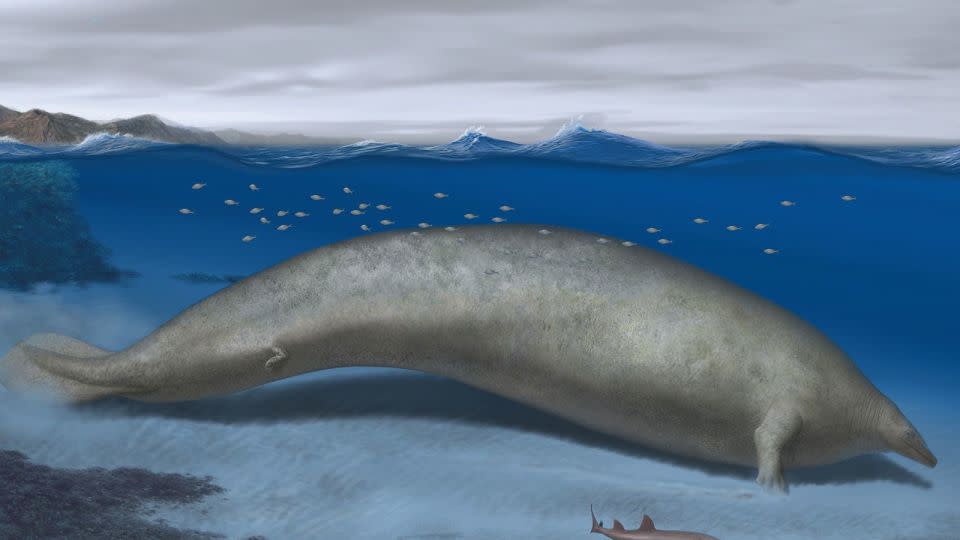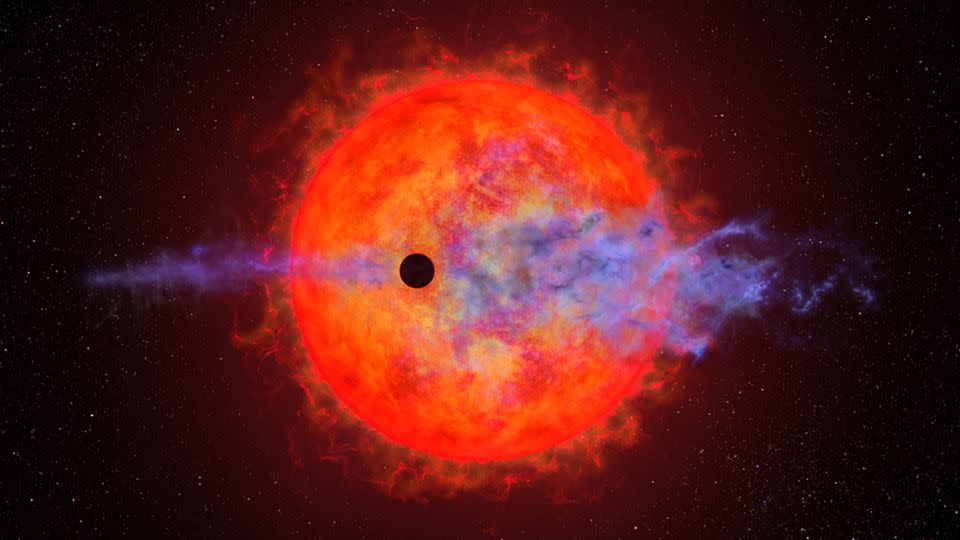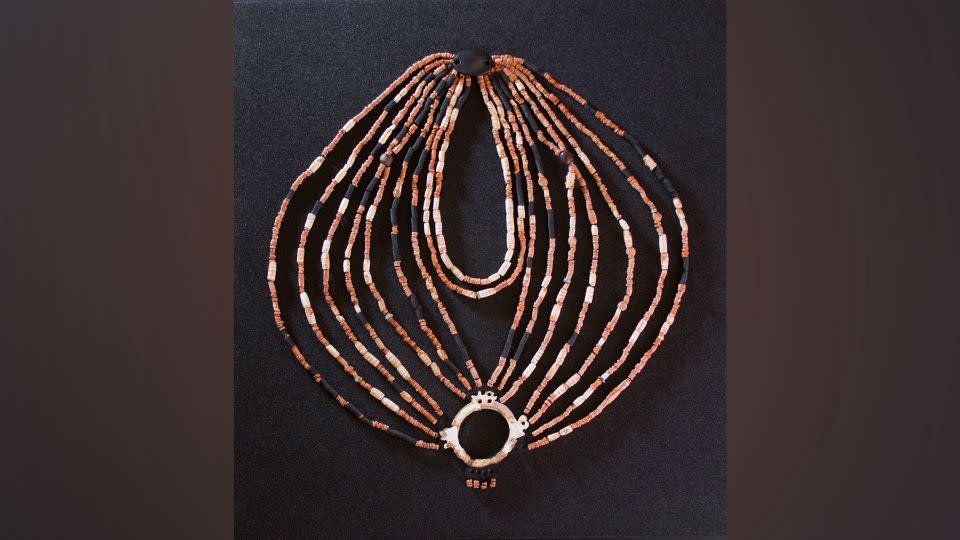Newly discovered ancient creature may have been the heaviest animal ever
Editor’s note: A version of this story appeared in CNN’s Wonder Theory science newsletter. To get it in your inbox, sign up for free here.
Fossils can appear in the oddest of places.
As Earth’s shifting tectonic plates have rearranged continents over time and the planet has by turns cooled and warmed, mountain ranges appeared and glaciers carved paths.
Those natural movements, combined with erosion, unearth sedimentary rock that tells stories of a world that existed long before humans.
In certain conditions, encased in the stone are well-preserved bones — which sometimes take years to remove before they can be studied.
This week, scientists shared discoveries of ancient species that lived and died tens of millions of years ago, providing tantalizing insights into creatures never documented until now.
Dig this

Excavations in southern Peru’s Ica Valley have turned up massive bones that belonged to what may have been the heaviest animal to have ever lived on the planet.
The colossal ancient whale, which swam the seas about 39 million years ago, likely weighed two to three times more than the blue whale.
It took years for researchers to pry the giant fossils out of rock and determine what they belonged to — a whale they dubbed Perucetus colossus.
With such enormous body mass, the creature likely patrolled shallow waters and used an undulating swimming style.
Separately, scientists found remarkably well-preserved fossils of 505 million-year-old jellyfish high in the Canadian Rockies, revealing a previously unknown species with 90 fingerlike tentacles.
Fantastic creatures
Humans are far from being the only species that likes to play and laugh.
Dr. Michael Brecht, a professor of systems neurobiology and neural computation at Humboldt University in Berlin, and his colleagues want to understand the neuroscience behind play in animals.
And to do so, the researchers tickled rats and observed their brain activity.
The rats laughed when playing with each other and during tickling sessions, emitting an ultrasonic squeaking too high-pitched for human ears. “Rats really love to be tickled,” Brecht said.
Establishing a better understanding of how play behavior works in the brain could uncover insights into its evolutionary importance throughout the animal kingdom.
Across the universe

When the Hubble Space Telescope initially observed a young planetary system 32 light-years from Earth, it didn’t reveal any surprises.
But a second look at the red dwarf star, AU Microscopii, showed the gaseous planet that whirls around it every 8.46 days exhibiting intriguingly unusual activity. Energetic outbursts from the young star are blasting away at the planet and causing its hydrogen atmosphere to puff away into space, as depicted in the illustration above.
Meanwhile, the Euclid telescope sent to space in July has captured its first, star-filled test images, which tease many wonders to come. And the James Webb Space Telescope spied new details within the colorful, iconic Ring Nebula.
Explorations
In an effort to understand virgin birth in animals, scientists used gene editing to trigger the phenomenon in fruit flies.
The fruit flies in the groundbreaking study don’t typically reproduce through virgin births, also called parthenogenesis, although many animal species do.
The researchers harnessed gene mutations that produced generations of female fruit flies capable of reproducing entirely on their own, without the need to interact with males.
But rest assured — although it all sounds very sci-fi, the research isn’t intended to lead to human virgin births. What’s more, the study’s parthenogenesis road map may not be so easy to duplicate in other species.
A long time ago

The painstaking reassembly of an 8,000-year-old adornment was a puzzle that took years to complete.
During excavations of a Neolithic village called Ba’ja in southern Jordan, an international team of archaeologists uncovered more than 2,500 beads made from stone and shells inside the grave of an 8-year-old child.
As the researchers studied the red and white beads, along with a hematite pendant and a mother-of-pearl ring, they realized the artifacts were the remains of an ornate necklace that the child wore for burial thousands of years ago.
An analysis of the beads’ composition and craftsmanship has provided unique insights into an ancient society.
Now that the team has pieced together the intricate necklace, it is on display at the Petra Museum.
Curiosities
These stories will grab your attention:
— Invasive hammerhead flatworms have been popping up along the East Coast, but experts say the striped, toxin-coated worms have been in the United States for a long time. Here’s what to do if you spot them in your yard.
— The mission team at NASA was relieved when a long-shot “shout” restored communication with Voyager 2 after a slight shift pointed the spacecraft’s antenna away from Earth and caused a blackout.
— Lost for centuries, the ruins of a private theater belonging to the first century Roman Emperor Nero have been unearthed near the Vatican.
Like what you’ve read? Oh, but there’s more. Sign up here to receive in your inbox the next edition of Wonder Theory, brought to you by CNN Space and Science writers Ashley Strickland and Katie Hunt. They find wonder in planets beyond our solar system and discoveries from the ancient world.
For more CNN news and newsletters create an account at CNN.com

